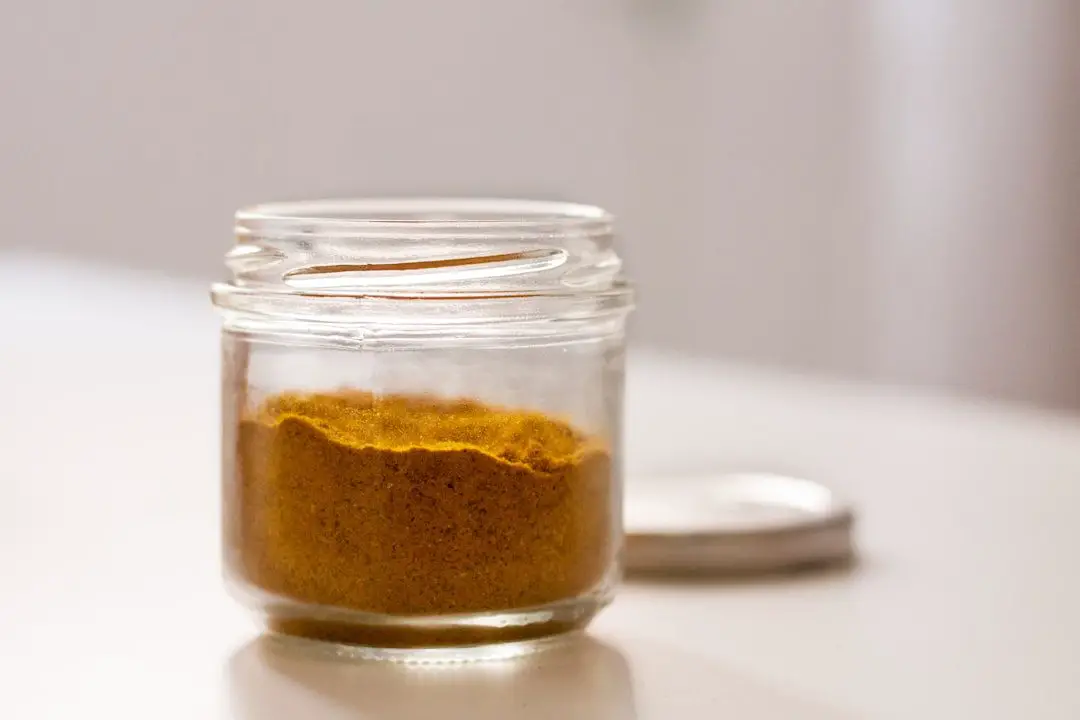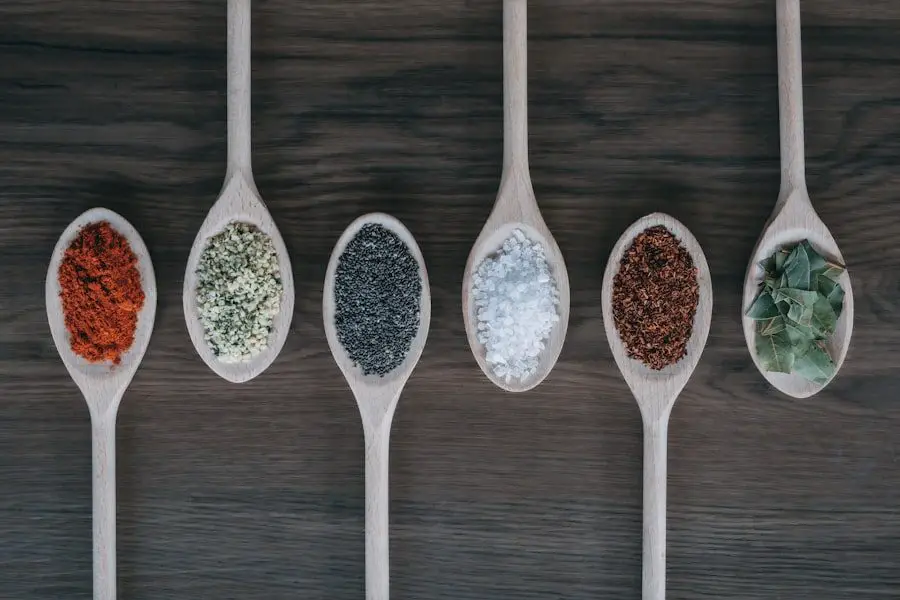
Spices have been an integral part of human civilization for thousands of years. From ancient times to the present day, spices have played a crucial role in enhancing the flavor and aroma of food. They have been used not only for culinary purposes but also for medicinal and preservation purposes. The history of spices is rich and diverse, with many spices being traded across continents and cultures.
Spices are derived from various parts of plants, such as seeds, bark, roots, and fruits. They are known for their strong flavors and aromas, which can transform a simple dish into a culinary masterpiece. Spices add depth, complexity, and character to food, making it more enjoyable and satisfying.
Key Takeaways
- Essential food spices can enhance the flavor and aroma of your dishes.
- Using spices in your cooking can provide health benefits and boost your immune system.
- There are different types of spices, including whole, ground, and blends.
- Must-have spices for your pantry include cumin, cinnamon, turmeric, paprika, and black pepper.
- Storing your spices in a cool, dry place can help maintain their freshness and potency.
Benefits of Using Spices in Your Cooking
Using spices in your cooking has numerous benefits beyond just enhancing the flavor of your dishes. Here are some of the key benefits:
1. Enhances flavor and aroma: Spices add depth and complexity to dishes, making them more flavorful and aromatic. They can turn a bland meal into a delicious feast by adding layers of taste and aroma.
2. Boosts nutritional value: Many spices are packed with essential nutrients and antioxidants that can boost your overall health. For example, turmeric is known for its anti-inflammatory properties, while cinnamon helps regulate blood sugar levels.
3. Promotes digestion and metabolism: Certain spices, such as ginger and cumin, have been used for centuries to aid digestion and improve metabolism. They can help alleviate digestive issues like bloating and indigestion.
Understanding the Different Types of Spices
To fully appreciate the world of spices, it’s important to understand the different types available. Here are some key points to consider:
1. Herbs vs. spices: While herbs and spices are often used interchangeably, there is a slight difference between the two. Herbs are derived from the leaves of plants, while spices come from other parts like seeds, bark, and roots. Both herbs and spices add flavor to dishes, but spices tend to have a stronger and more intense flavor.
2. Common spices and their uses: There are numerous common spices that are widely used in cooking. Some examples include black pepper, cumin, paprika, cinnamon, and nutmeg. Each spice has its own unique flavor profile and can be used in a variety of dishes.
3. Exotic spices and their origins: Exotic spices are those that are not commonly found in everyday cooking. These spices often come from distant lands and have unique flavors that can add an element of surprise to your dishes. Examples of exotic spices include saffron, cardamom, star anise, and sumac.
Must-Have Spices for Your Pantry
| Spice | Flavor Profile | Commonly Used In | Health Benefits |
|---|---|---|---|
| Cumin | Earthy, nutty, warm | Chili, curry, tacos, soups | May aid digestion, improve blood sugar control |
| Paprika | Sweet, smoky, mild | Goulash, roasted meats, deviled eggs | Rich in antioxidants, may improve heart health |
| Cinnamon | Sweet, warm, spicy | Baked goods, oatmeal, coffee | May lower blood sugar, reduce inflammation |
| Ginger | Pungent, spicy, warm | Stir-fries, marinades, tea | May reduce nausea, improve digestion |
| Turmeric | Earthy, slightly bitter, warm | Curries, rice dishes, smoothies | May reduce inflammation, improve brain function |
Every home cook should have a well-stocked spice pantry to enhance their culinary creations. Here are the top 10 essential spices that should be in every kitchen:
1. Black pepper: A staple spice that adds heat and depth to dishes.
2. Cumin: Adds a warm and earthy flavor to curries, soups, and stews.
3. Paprika: Adds a smoky and slightly sweet flavor to dishes.
4. Cinnamon: Adds warmth and sweetness to both sweet and savory dishes.
5. Turmeric: Known for its vibrant yellow color and earthy flavor.
6. Ginger: Adds a spicy and slightly sweet flavor to dishes.
7. Nutmeg: Adds warmth and depth to both sweet and savory dishes.
8. Cloves: Adds a strong and aromatic flavor to dishes.
9. Chili powder: Adds heat and depth to Mexican and Indian dishes.
10. Coriander: Adds a citrusy and slightly sweet flavor to dishes.
When choosing spices, it’s important to look for quality products. Freshness is key, as stale spices can lose their flavor and aroma. Look for spices that are vibrant in color and have a strong aroma. It’s also a good idea to buy whole spices and grind them yourself, as this will ensure maximum freshness.
How to Store Your Spices for Maximum Freshness
Proper storage of spices is essential to maintain their freshness and flavor. Here are some tips for storing your spices:
1. Keep them in airtight containers: Spices should be stored in airtight containers to prevent moisture and air from degrading their quality. Glass jars with tight-fitting lids are ideal for storing spices.
2. Store them in a cool, dark place: Spices should be kept away from heat, light, and humidity, as these can cause them to lose their flavor and potency. A cool, dark pantry or cupboard is the best place to store spices.
3. Avoid storing them near the stove: Heat from the stove can cause spices to deteriorate quickly. It’s best to store them away from direct heat sources.
The shelf life of spices varies depending on the type of spice. Ground spices generally have a shorter shelf life compared to whole spices. As a general rule, ground spices should be used within 1-2 years, while whole spices can last up to 3-4 years if stored properly.
Signs of expired spices include a loss of aroma and flavor, dull color, and clumping. If your spices no longer smell or taste as they should, it’s time to replace them.
Creative Ways to Use Spices in Your Recipes

Spices can be used in a variety of creative ways to elevate your recipes. Here are some ideas:
1. Unconventional spice pairings: Don’t be afraid to experiment with different spice combinations. For example, try adding a pinch of cinnamon to your chili or cardamom to your chocolate desserts for a unique twist.
2. Spice-infused drinks and desserts: Spices can be used to add depth and complexity to drinks and desserts. Try infusing spices like cloves, star anise, or ginger in hot apple cider or adding cinnamon to your favorite baked goods.
3. Spice rubs and marinades: Spices can be used to create flavorful rubs and marinades for meats, fish, and vegetables. Mix together your favorite spices with some oil, salt, and pepper to create a delicious marinade for grilling or roasting.
Spices for Health and Wellness
In addition to their culinary uses, spices also offer numerous health benefits. Here are some ways spices can promote health and wellness:
1. Medicinal properties of spices: Many spices have been used for centuries in traditional medicine for their healing properties. For example, turmeric is known for its anti-inflammatory properties, while ginger is often used to alleviate nausea and aid digestion.
2. Anti-inflammatory and antioxidant benefits: Spices are rich in antioxidants, which help protect the body against oxidative stress and inflammation. Turmeric, cinnamon, and cloves are particularly high in antioxidants.
3. Spices for weight loss and management: Some spices, such as cayenne pepper and black pepper, have been shown to boost metabolism and aid in weight loss. They can also help curb cravings and reduce appetite.
Cooking with Spices: Tips and Tricks
Cooking with spices can be a bit intimidating for beginners, but with a few tips and tricks, you can become a spice master in no time:
1. Balancing flavors with spices: When using spices, it’s important to balance the flavors to create a harmonious dish. Start with a small amount of spice and gradually add more until you achieve the desired flavor.
2. Using spices in different cooking methods: Spices can be used in various cooking methods, such as sautéing, roasting, grilling, and simmering. Some spices are best added at the beginning of cooking to infuse the flavors, while others are best added towards the end for a burst of freshness.
3. Avoiding common spice mistakes: One common mistake when using spices is adding them directly to hot oil, which can cause them to burn and become bitter. It’s best to add spices to a dish when there is some liquid present, such as broth or sauce.
Exploring Global Flavors with Spices
Spices are an integral part of many regional cuisines around the world. Here are some ways to explore global flavors with spices:
1. Regional spice blends and cuisines: Each region has its own unique spice blends and culinary traditions. Explore cuisines like Indian, Moroccan, Thai, and Mexican to discover new flavors and spice combinations.
2. Travel-inspired spice recipes: If you can’t travel to exotic destinations, bring the flavors of those places into your kitchen. Try recreating dishes from your favorite travel destinations using authentic spices and ingredients.
3. Cultural significance of spices: Spices often have cultural and historical significance in different regions. Learn about the cultural context behind certain spices and how they have shaped the culinary traditions of different cultures.
DIY Spice Blends for Your Cooking Arsenal
Creating your own spice blends can be a fun and rewarding way to customize your dishes. Here are some ideas for homemade spice blends:
1. Homemade spice blends for different dishes: Create your own spice blends for specific types of cuisine or dishes. For example, create a curry powder blend for Indian dishes or a taco seasoning blend for Mexican-inspired meals.
2. Customizing spice blends to your taste: Adjust the ratios of spices in a blend to suit your personal taste preferences. Add more heat or sweetness depending on your preference.
3. Storing and labeling homemade spice blends: Store homemade spice blends in airtight containers and label them with the name of the blend and the date it was made. This will help you keep track of freshness and ensure you use them before they expire.
Spices are an essential part of cooking, adding flavor, aroma, and depth to dishes. They have a rich history and are used in cuisines around the world. Using spices in your cooking not only enhances the taste of your dishes but also offers numerous health benefits. By understanding the different types of spices, storing them properly, and experimenting with different spice blends, you can elevate your culinary creations to new heights. So go ahead, explore the world of spices and let your taste buds embark on a flavorful journey.
If you’re a food enthusiast looking to spice up your culinary adventures, you won’t want to miss this article on flavorfulsips.com. They have compiled a comprehensive list of food spices that will take your dishes to the next level. But that’s not all! While you’re there, be sure to check out their article on cooking up Mediterranean rice delights, where they share delicious recipes and tips for creating mouthwatering rice dishes inspired by the Mediterranean cuisine. And if you’re curious about loganberries and how to unleash their unique flavor in your cooking, they’ve got you covered with another fascinating article. Don’t forget to explore their article answering 10 popular questions about lassi, the refreshing mango yogurt drink that has gained popularity worldwide. So, grab your apron and get ready to embark on a flavorful journey with these exciting articles!



